Recent Posts
Thanksgiving Fire Safety: Tips for a Safe and Enjoyable Celebration | SERVPRO of Pueblo
1/7/2025 (Permalink)
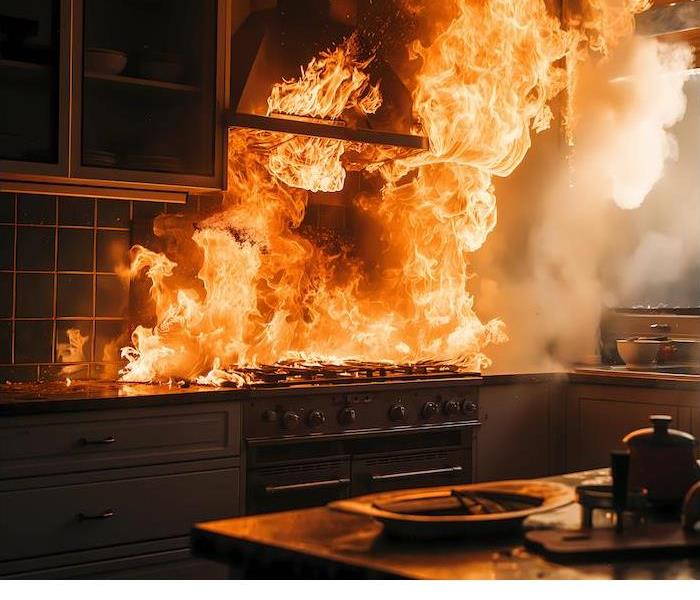 Stay safe this Thanksgiving with fire safety tips for your kitchen, including proper turkey frying!
Stay safe this Thanksgiving with fire safety tips for your kitchen, including proper turkey frying!
Thanksgiving is a time for families to gather, share gratitude, and indulge in delicious meals. However, it’s also a period when kitchen accidents can lead to fire hazards if proper precautions aren’t taken. At SERVPRO of Pueblo, we want to help you enjoy a safe and memorable Thanksgiving. Here are some essential tips for Thanksgiving fire safety, including how to deep fry a turkey without compromising your home’s safety.
Creating a Fire-Safe Kitchen EnvironmentThe kitchen is the heart of Thanksgiving festivities, but it can quickly become a hotspot for fire hazards if you’re not careful. Start by ensuring that flammable items such as dish towels, paper products, and oven mitts are kept well away from the stove and other heat sources. It’s crucial to remain vigilant while cooking; never leave your stove unattended, especially when using oil or open flames. If you must step away, even for a moment, turn off the heat to prevent any potential accidents.
Another important safety measure is to have a fire extinguisher easily accessible in the kitchen. Familiarize everyone in your household with its location and usage. Understanding how to operate the extinguisher can make a critical difference in case of an emergency. Regularly check that your fire alarms are working and have fresh batteries. This ensures that you’re alerted promptly in the event of smoke or fire, giving you the best chance to respond quickly.
Safe Turkey Deep Frying TechniquesDeep frying a turkey has gained popularity for producing crispy, delicious results, but it’s vital to approach this method with caution. Always set up your deep fryer outdoors, at least 10 feet away from your home, garages, and overhanging branches. Choose a flat, stable surface to avoid spills or tipping. Before you heat the oil, ensure your turkey is completely thawed and dry. Water and hot oil don’t mix; introducing moisture can cause the oil to splatter and create a fire hazard.
Monitor the oil temperature closely, and never leave the fryer unattended. If you find yourself distracted, ask a family member to keep an eye on it. In the unfortunate event that a fire breaks out, use a fire extinguisher specifically designed for grease fires. Do not use water to extinguish a grease fire, as it can cause the flames to spread. Instead, turn off the heat and cover the pot with a lid if safe to do so, or use the fire extinguisher.
Ensuring Safety After the MealOnce the Thanksgiving feast is over, it’s essential to maintain safety as the celebration winds down. Make sure all cooking appliances are turned off, and never leave leftovers out at room temperature for more than two hours. Properly refrigerate leftovers to prevent foodborne illnesses and keep your kitchen safe. When disposing of used cooking oil, do so responsibly. Allow the oil to cool completely before transferring it to a sealed container for disposal.
As you clean up, avoid the temptation to leave hot pots or pans unattended. Let them cool completely before cleaning or storing them. This practice not only helps prevent burns but also minimizes the risk of fire hazards. Lastly, remind everyone in the household to remain vigilant and report any unusual smells or signs of smoke.
Thanksgiving is a time to celebrate with family and friends, but safety should always come first. By following these Thanksgiving fire safety tips, including safe methods for deep frying a turkey, you can ensure a joyful and worry-free holiday. If you experience a fire in your home, remember that SERVPRO of Pueblo is ready to assist with fire damage restoration and cleanup. We wish you a safe and happy Thanksgiving!
For more information on fire safety and our restoration services, don’t hesitate to contact us today. Your safety is our priority, and we’re here to help® you protect your home.
Winter-Proof Your Home: How to Prevent Mold Growth This Season | SERVPRO of Pueblo
1/7/2025 (Permalink)
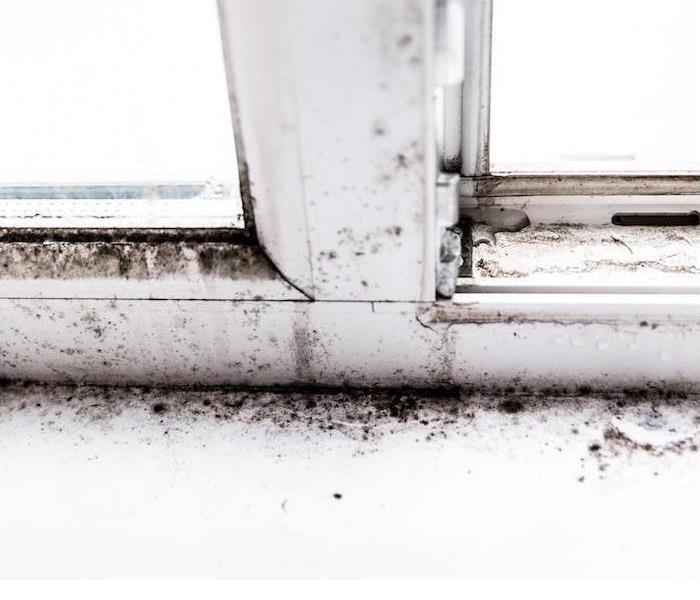 Keep your home mold-free this winter with proper humidity control and insulation.
Keep your home mold-free this winter with proper humidity control and insulation.
As winter sets in, the colder temperatures and fluctuating humidity levels can create ideal conditions for mold to develop inside your home. Mold thrives in moist, dark environments, and the combination of heating systems, condensation, and less ventilation during the winter months can quickly lead to problems.
However, with a few proactive steps, you can reduce the risk of mold growth and protect your home this season. SERVPRO of Pueblo shares essential tips to keep your home mold-free during the colder months.
1. Manage Humidity to Keep Mold at BayDuring winter, humidity tends to rise indoors due to heating systems, cooking, and hot showers. Unfortunately, this increased moisture creates the perfect environment for mold to thrive, especially in areas like bathrooms, kitchens, and basements. Maintaining indoor humidity at safe levels (ideally between 30-50%) is one of the best ways to prevent mold growth.
Using exhaust fans while cooking or showering can help reduce moisture levels, while a dehumidifier can be particularly effective in damp areas like basements or crawl spaces. If you notice condensation on windows or walls, it’s a sign that humidity is too high. Open windows slightly when possible to improve ventilation, and make sure that your dryer vents properly expel moisture outdoors.
2. Insulate Vulnerable Areas to Prevent Water DamageWinter weather can cause pipes to freeze and burst, which is a significant source of water damage that can lead to mold growth. Condensation that forms on pipes during fluctuating temperatures can also drip onto surfaces and into walls, providing an ideal breeding ground for mold. Insulating pipes in your attic, basement, and crawl spaces can help prevent this issue.
Additionally, take the time to check for any leaks around plumbing fixtures and repair them quickly. Even a small leak can cause water to accumulate in hidden areas of your home, which may lead to mold growth. Sealing any gaps around windows and doors can also help maintain stable indoor temperatures and reduce the chances of condensation forming on pipes.
3. Keep Your Home Well-VentilatedWith colder weather, it’s tempting to seal your home tight to conserve heat. However, poor ventilation can trap moisture indoors, creating an environment ripe for mold. Make it a point to ensure that your home has proper airflow. While opening windows may not be ideal in freezing temperatures, you can use an air exchanger to improve ventilation and help moisture escape.
Pay special attention to high-moisture areas like the attic, crawl spaces, and basement, which can easily accumulate dampness during the winter. Ensuring proper ventilation in these spaces will reduce the chance of mold developing on insulation or structural elements of your home.
Take Action Now to Protect Your HomePreventing mold growth during the winter is all about staying proactive. By controlling humidity, insulating your pipes, and keeping your home ventilated, you can significantly reduce the risk of mold damage. If you notice any signs of mold or water damage in your home, don’t wait—contact SERVPRO of Pueblo today. Our team of professionals is ready to help you with mold inspections, prevention, and remediation, ensuring your home stays safe and healthy this winter.
Reach out to us today to learn more about our mold services or to schedule an inspection!
Tips to Protect Your House During Wildfire Season | SERVPRO of Pueblo
10/17/2024 (Permalink)
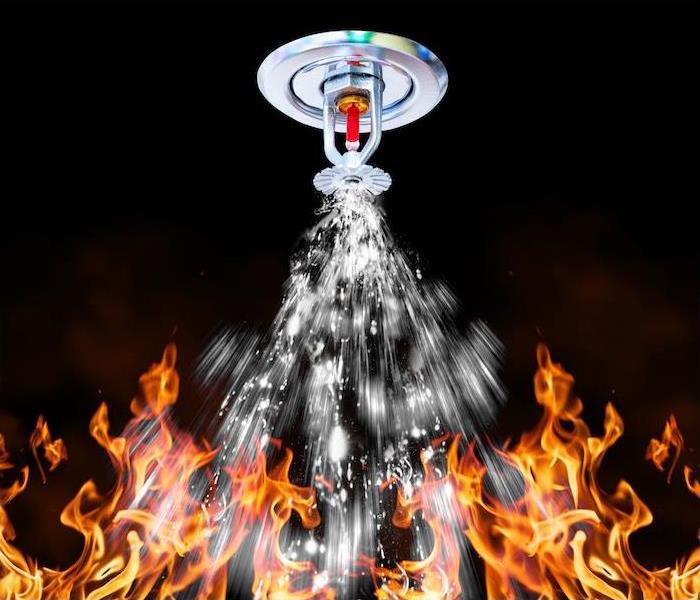 Protect your business with a safety plan! Contact SERVPRO® for expert guidance on fire prevention and ensure your employees and property stay safe.
Protect your business with a safety plan! Contact SERVPRO® for expert guidance on fire prevention and ensure your employees and property stay safe.
Wildfire season poses a serious threat to homes, especially in areas prone to dry conditions and high winds. The risk of a wildfire spreading to residential areas underscores the importance of taking proactive measures to protect your property.
At SERVPRO of Pueblo, we understand the urgency of safeguarding your home from the devastating effects of wildfires. Here are some essential tips to help you prepare and protect your house during wildfire season.
Create a Defensible Space Around Your HomeOne of the most effective ways to protect your home from wildfires is to create a defensible space around it. This involves clearing flammable materials and vegetation that could act as fuel for a fire. Start by maintaining a safe distance between your home and any trees, shrubs, or grass. Trim branches that hang close to your house and remove dead leaves and other debris from gutters and roof areas.
Additionally, consider using fire-resistant plants and landscaping materials in your garden. By creating a defensible space, you reduce the likelihood of a fire reaching your home and give firefighters a better chance to defend your property if necessary.
Fortify Your Home’s ExteriorStrengthening the exterior of your home can significantly enhance its resilience against wildfires. Start by ensuring that your roof is made of non-flammable materials such as metal or asphalt shingles, and keep it free of leaves and other debris. Install metal or fiberglass mesh screens on vents and openings to prevent embers from entering your home.
Ensure that windows and doors are tightly sealed and consider using tempered glass or fire-resistant materials to further protect these vulnerable areas. Regularly inspect and maintain these features to ensure they are in good condition and capable of withstanding a wildfire.
Develop a Wildfire Preparedness PlanIn addition to physical measures, having a comprehensive wildfire preparedness plan is crucial. Develop an evacuation plan that includes multiple routes out of your area and establish a communication strategy with family members to ensure everyone knows what to do in the event of an evacuation. Prepare an emergency kit with essential items such as medications, important documents, and basic supplies that you can quickly grab if you need to leave your home.
Make sure to stay informed about local fire alerts and conditions by signing up for emergency notifications and monitoring local news. A well-thought-out preparedness plan ensures that you and your family are ready to respond swiftly and safely in case of a wildfire.
Protecting your home during wildfire season requires a combination of proactive measures and preparedness. By creating a defensible space, fortifying your home’s exterior, and developing a comprehensive preparedness plan, you can significantly reduce the risk of damage and ensure the safety of your property and loved ones.
At SERVPRO of Pueblo, we are dedicated to helping you protect your home and respond effectively to any emergencies. If you need assistance with wildfire preparation or have any concerns about the safety of your property, contact us today. Let us help you safeguard your home and give you peace of mind during wildfire season.
Reach out now to learn more about our services and how we can support you in protecting your home.
What to Do After a Fall Storm: Essential Steps for Home Damage Recovery in Colorado | SERVPRO of Pueblo
10/17/2024 (Permalink)
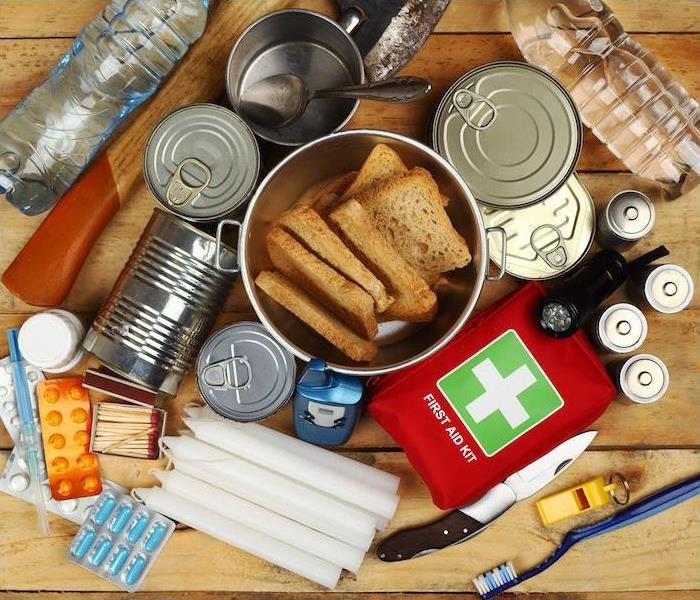 Prepare for fall weather risks with SERVPRO®. Stay safe by creating an emergency plan and staying informed—reach out to us for expert support!
Prepare for fall weather risks with SERVPRO®. Stay safe by creating an emergency plan and staying informed—reach out to us for expert support!
Fall storms in Colorado can be both sudden and severe, bringing everything from intense winds and heavy rain to flooding and falling trees. The aftermath of such storms can leave your home in a state of disarray, making recovery seem overwhelming.
At SERVPRO of Pueblo, we understand the unique challenges posed by Colorado’s fall weather and are here to guide you through the essential steps to take if your home has been damaged. Here’s how to effectively manage the situation and begin the recovery process.
Assess the Damage SafelyThe first crucial step after a fall storm is to safely assess the damage to your property. Start by inspecting the exterior of your home from a safe distance, looking out for hazards such as downed power lines or unstable structures.
Once you’ve ensured it’s safe to enter, use a flashlight rather than candles to avoid any potential fire risks from gas leaks. Document all visible damage with clear photos or videos, including damage to the roof, broken windows, and any signs of water infiltration. If the damage appears extensive or you’re unsure about the safety of your home, it’s wise to consult with a professional for a comprehensive inspection.
Secure and Mitigate Further DamageAfter assessing the damage, the next important step is to prevent additional issues. If you identify leaks or water damage, take immediate action to minimize further harm. Use tarps to cover broken windows and secure any areas where water might enter.
If standing water is present, be cautious of electrical hazards and avoid using any electrical outlets or appliances until a professional confirms that it’s safe. SERVPRO of Pueblo offers specialized services for water extraction and drying, which are crucial for mitigating further damage and preventing mold growth.
Contact Insurance and Restoration ProfessionalsOnce you’ve secured your home and taken steps to prevent additional damage, it’s time to get in touch with your insurance provider. Report the damage, provide them with all necessary documentation, and follow their guidelines for filing a claim. Concurrently, reach out to restoration professionals like SERVPRO of Pueblo.
Our team is equipped to handle comprehensive damage restoration, including water removal, structural drying, and repairs. By coordinating with both your insurance company and our restoration experts, you can streamline the recovery process and ensure that your home is restored to its pre-storm condition. Navigating the aftermath of a fall storm in Colorado can be challenging, but taking these steps will help you manage the recovery process effectively. SERVPRO of Pueblo is dedicated to assisting you every step of the way, from initial damage assessment to final repairs.
If your home has been affected by a fall storm, contact us today for expert help and support. We’re here to restore your home and bring peace of mind back to you. Call us now to start your recovery journey.
Winter Fire Safety: Protect Your Home with These Essential Tips | SERVPRO of Pueblo
9/4/2024 (Permalink)
 Keep your home safe this winter with these helpful fire safety tips from SERVPRO of Pueblo!
Keep your home safe this winter with these helpful fire safety tips from SERVPRO of Pueblo!
As winter settles in, the increased use of heating systems, holiday decorations, and space heaters can elevate the risk of a home fire. Understanding and implementing fire safety measures is crucial to keeping your home and family safe during the colder months.
Read on for essential tips to protect your home and ensure a safe and warm winter season.
Prepare Your Heating Systems
As winter approaches, it's crucial to ensure your heating systems are safe and efficient to reduce the risk of a home fire. Start by having a professional inspect and service your furnace or heating system before you use it for the first time each season. Regular maintenance can help identify and address potential issues, such as faulty wiring or gas leaks, that could lead to a fire.
Additionally, clean and inspect your chimney and flue if you use a fireplace or wood stove. Creosote buildup in chimneys is a leading cause of chimney fires. Make sure to have these systems professionally cleaned to prevent dangerous fires. Taking these steps helps ensure that your heating systems operate safely and efficiently throughout the winter.
Practice Fire Safety with Holiday Decorations
Winter months, especially the holiday season, often involve the use of festive decorations that can increase the risk of a home fire if not managed properly. When decorating with lights, ensure that you use only those that are rated for indoor use and check for any frayed or damaged wires before hanging them up.
Overloading electrical outlets can lead to overheating and potential fires, so avoid plugging too many devices into a single outlet. Additionally, keep all decorations, including trees, away from heat sources such as radiators and space heaters. Real trees should be watered regularly to prevent them from drying out, as dry trees are highly flammable. By practicing these fire safety tips, you can enjoy a festive season without compromising your home's safety.
Ensure Safe Use of Space Heaters and Fireplaces
Space heaters and fireplaces are commonly used during the winter months for additional warmth, but they also pose significant fire risks if not used correctly. Always place space heaters on a flat, non-flammable surface and keep them at least three feet away from any combustible materials such as curtains, furniture, or bedding.
Never leave space heaters unattended, and turn them off when you leave the room or go to sleep. For fireplaces, use a fireplace screen to prevent embers from escaping and ensure that you only burn seasoned wood to reduce the amount of creosote buildup in the chimney. Additionally, make sure that your smoke alarms are functional and have fresh batteries. Regularly testing and maintaining your smoke alarms can provide an early warning in case a fire does occur, giving you valuable time to respond.
Winter is a time when fire risks can increase due to the use of heating systems, holiday decorations, and space heaters. By taking preventive measures and practicing fire safety, you can significantly reduce the risk of a home fire. If a fire does occur despite your best efforts, SERVPRO of Pueblo is Here to Help® with professional fire damage restoration services.
For immediate assistance and expert guidance, contact SERVPRO of Pueblo today. Protect your home and family this winter by following these safety tips and knowing that help is just a call away.
Preparing Your Home for Summer Storms | SERVPRO of Pueblo
8/30/2024 (Permalink)
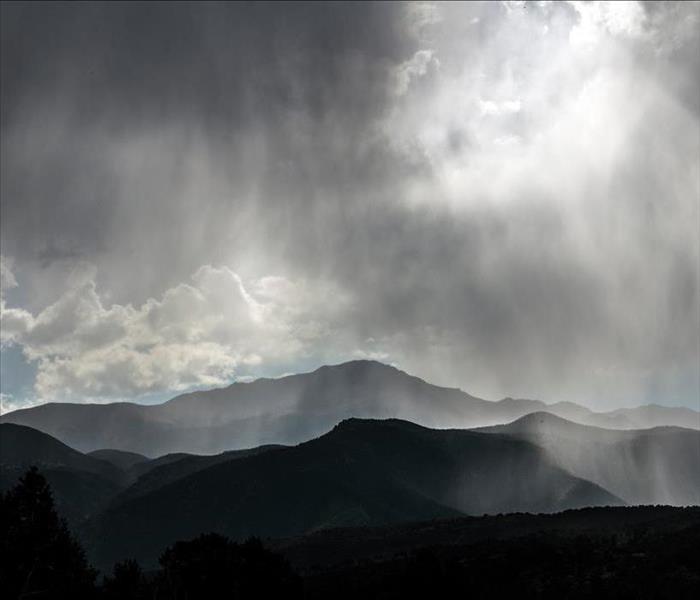 When storms strike your Colorado property, call SERVPRO of Pueblo to resolve any damage fast!
When storms strike your Colorado property, call SERVPRO of Pueblo to resolve any damage fast!
Late summer storms can bring heavy rain and intense winds, posing a significant risk of water damage to your home. To mitigate these risks, it's crucial to take proactive steps in preparing your property. Start by inspecting your roof for any missing or damaged shingles. A compromised roof can easily let water seep into your home, leading to potential leaks and damage.
Additionally, ensure that your gutters and downspouts are clean and functioning correctly. Clogged gutters can cause water to overflow, potentially damaging your foundation and exterior walls. By maintaining these critical components, you can help prevent water from finding its way into your home.
Address Common Vulnerabilities
Beyond roofing and gutters, there are other areas in your home that require attention to reduce the risk of water damage. Check for cracks or gaps around windows and doors, as these can allow water to enter during heavy rainfall. Properly sealing these openings with weather-resistant caulk can make a significant difference. It's also wise to examine your home's foundation for any signs of cracks or leaks.
Small fissures can expand over time, leading to substantial water infiltration if not addressed promptly. Installing sump pumps in your basement or crawl space can help manage excess water and prevent flooding. These steps collectively contribute to safeguarding your home against the unpredictable nature of late summer storms.
Create an Emergency Plan
Even with the best preventive measures, it's essential to be prepared for the possibility of water damage. Develop an emergency plan that includes identifying and locating shut-off valves for your water supply, which can be crucial if a pipe bursts or a leak occurs. Keep important documents and valuables in waterproof containers or elevated areas to protect them from potential water exposure.
Additionally, consider investing in a battery-powered weather radio or weather app to stay informed about storm alerts and conditions. Having an emergency plan in place ensures that you can respond quickly and effectively if water damage does occur, minimizing its impact on your home and belongings.
If you experience water damage from late summer storms or any other cause, SERVPRO of Pueblo is Here to Help®. Our team of experts is available 24/7 to provide rapid and reliable water damage restoration services.
Don’t wait until it's too late—take these preventive steps now and contact us to ensure your home is protected. For immediate assistance and expert guidance, reach out to SERVPRO of Pueblo today. Let us help you safeguard your home and restore peace of mind.
5 Essential Tips to Mitigate Flooding Risks in Pueblo, Colorado
5/18/2024 (Permalink)
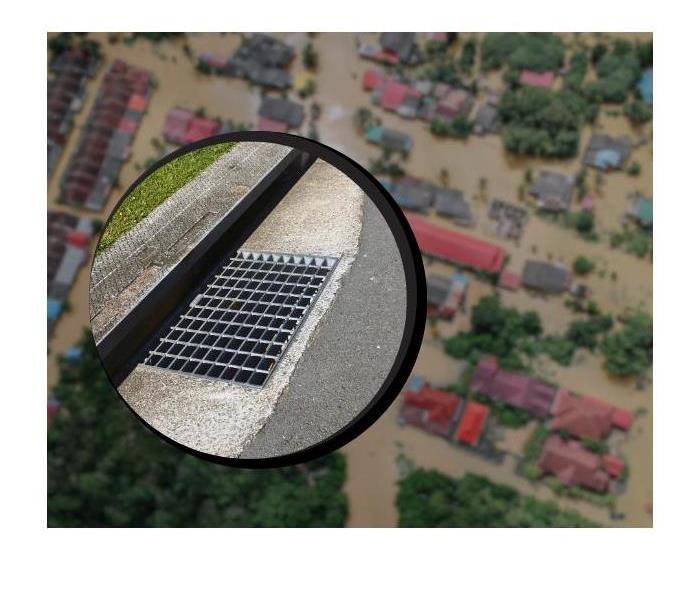 Mitigate Flooding Risks in Pueblo, Colorado
Mitigate Flooding Risks in Pueblo, Colorado
Pueblo, Colorado, nestled at the confluence of the Arkansas River and Fountain Creek, is a vibrant city known for its rich history, diverse culture, and stunning natural landscapes. However, like many cities situated near water bodies, Pueblo is not immune to the threat of flooding. With the increasing frequency and intensity of extreme weather events attributed to climate change, it's crucial for residents and authorities alike to take proactive measures to reduce flooding risks and safeguard lives and properties. In this blog post, we'll explore five essential tips to mitigate flooding risks in Pueblo, Colorado.
1. Stay Informed and Prepared:
Knowledge is power when it comes to dealing with flooding risks. Stay informed about weather forecasts, river levels, and flood alerts issued by local authorities. Sign up for emergency notifications and heed evacuation orders if necessary. Develop a comprehensive emergency plan for your family or business, including evacuation routes, emergency contacts, and essential supplies like food, water, medications, and important documents. Being prepared can make a significant difference in how well you can navigate through a flooding event and ensure the safety of your loved ones.
2. Invest in Flood Insurance:
Many homeowners mistakenly believe that their standard homeowner's insurance policy covers flood damage. However, most policies exclude flood damage, leaving homeowners vulnerable to substantial financial losses. To protect your investment and mitigate financial risks associated with flooding, consider purchasing flood insurance through the National Flood Insurance Program (NFIP) or private insurers. Flood insurance can provide coverage for building structures and contents, helping you recover more quickly and effectively in the aftermath of a flood. Consult with an insurance agent to determine the appropriate coverage for your property and budget.
3. Implement Stormwater Management Practices:
Effective stormwater management is critical for reducing flooding risks in urban areas like Pueblo. Stormwater runoff from heavy rainfall can overwhelm drainage systems, leading to flash floods and property damage. Implementing stormwater management practices, such as installing rain gardens, permeable pavements, and green roofs, can help absorb and infiltrate rainwater, reducing the volume of runoff and alleviating pressure on drainage infrastructure. Additionally, maintaining and cleaning gutters, downspouts, and storm drains regularly can prevent blockages and ensure proper water flow away from your property.
4. Promote Natural Floodplain Functions:
Recognizing the ecological value of floodplains and restoring their natural functions can play a significant role in reducing flooding risks in Pueblo. Floodplains act as natural buffers that absorb excess water during heavy rainfall and help mitigate downstream flooding. Protecting and restoring floodplain areas through land-use planning, conservation easements, and green infrastructure projects can enhance their capacity to store and slow down floodwaters, reducing the severity of flooding events and protecting downstream communities. Encourage local policymakers and developers to prioritize floodplain preservation and restoration efforts to enhance community resilience to flooding.
5. Participate in Community Flood Mitigation Efforts:
Flooding is a community-wide issue that requires collective action and collaboration to address effectively. Get involved in community flood mitigation efforts by joining local watershed groups, neighborhood associations, or volunteer organizations dedicated to flood risk reduction and resilience building. Participate in floodplain mapping and hazard mitigation planning processes to contribute valuable insights and expertise to community decision-making. By working together with fellow residents, businesses, and government agencies, you can advocate for sustainable flood management strategies, secure funding for flood mitigation projects, and strengthen community resilience to flooding over the long term.
In conclusion, reducing flooding risks in Pueblo, Colorado, requires a multifaceted approach that combines individual preparedness, infrastructure improvements, ecosystem restoration, and community engagement. By staying informed, investing in flood insurance, implementing stormwater management practices, promoting natural floodplain functions, and participating in community flood mitigation efforts, residents and authorities can work together to mitigate the impacts of flooding and create a safer, more resilient city for future generations. Let's take proactive steps today to build a more flood-resilient Pueblo tomorrow.
Spring Cleaning in Pueblo, Colorado: A Refreshing Journey to Revitalize Your Home
4/8/2024 (Permalink)
 Refresh and Revitalize Your Home in Pueblo, CO.
Refresh and Revitalize Your Home in Pueblo, CO.
As the chill of winter melts away and the first signs of spring emerge, there's an undeniable urge to refresh and renew. In Pueblo, Colorado, where the seasons transition with striking beauty, spring cleaning takes on a whole new significance. It's not just about clearing out clutter or wiping away dust; it's a ritual that breathes new life into homes and spirits alike.
Pueblo sits nestled in the heart of southern Colorado, where the high desert meets the foothills of the Rocky Mountains. The landscape here is diverse and captivating, with rolling plains giving way to rugged peaks. Spring brings a symphony of colors as wildflowers bloom and the Arkansas River flows with renewed vigor.
Against this backdrop, the transition from winter to spring is eagerly awaited. It's a time to throw open the windows, let in the crisp mountain air, and bid farewell to the hibernation of the colder months. Spring cleaning in Pueblo isn't just a chore; it's a celebration of the changing seasons and a chance to welcome in the warmth and light.
One of the first steps in any spring cleaning endeavor is decluttering. In Pueblo, where outdoor adventures beckon year-round, it's easy for gear to accumulate over the winter months. From skis and snowboards to hiking boots and fishing rods, our closets and garages can quickly become overrun with equipment.
But spring is the perfect time to assess what's truly essential and what can be let go. Perhaps those skis that haven't seen the slopes in years could find a new home with someone who will appreciate them. Or maybe it's time to donate those old hiking boots and make room for a shiny new pair.
Beyond outdoor gear, spring cleaning is an opportunity to purge the excess from our lives. It's amazing how liberating it can feel to part ways with belongings that no longer serve us. In Pueblo, where simplicity and outdoor adventure go hand in hand, streamlining our possessions can lead to a greater sense of freedom and possibility.
Once the clutter has been cleared, it's time to breathe new life into our living spaces. In Pueblo, where the sun shines more than 300 days a year, natural light floods into our homes, illuminating every corner. Opening the windows and letting the fresh air circulate is an essential part of the spring cleaning ritual.
But it's not just about airing things out; it's also about infusing our homes with the scents of the season. In Pueblo, where the air is fragrant with the perfume of blooming flowers and budding trees, there's no shortage of inspiration. From lavender and sage to juniper and pine, the aromas of the high desert mingle with those of the mountains, creating a sensory symphony that invigorates the soul.
As we move from winter to spring, our cleaning routines adapt to the changing needs of our homes. In Pueblo, where temperatures can fluctuate dramatically, it's important to prepare for the warmer months ahead. That means swapping out heavy bedding for lighter linens, storing winter coats and boots, and prepping outdoor spaces for gatherings with friends and family.
But spring cleaning isn't just about the physical act of tidying up; it's also a time for introspection and renewal. In Pueblo, where the pace of life is a little slower and nature is always within reach, the spring season encourages us to pause and reflect on what truly matters. It's a time to let go of the past and embrace the possibilities of the future, both in our homes and in our lives.
In Pueblo, where neighbors still look out for one another and community is paramount, spring cleaning is often a shared endeavor. Whether it's organizing a neighborhood cleanup or swapping gardening tips over the fence, there's a sense of camaraderie that permeates the season. And as we work together to beautify our shared spaces, we strengthen the bonds that unite us as a community.
Spring cleaning in Pueblo isn't just about making our homes sparkle; it's about connecting with our surroundings and with each other. It's a time to celebrate the beauty of our natural environment and to reaffirm our commitment to preserving it for future generations. And as we embark on this refreshing journey together, we're reminded that the true essence of spring cleaning lies not in the tasks themselves, but in the spirit of renewal that they inspire.
How to Get Rid of Black Mold in Pueblo, CO: A Comprehensive Guide to a Healtheir Home
3/9/2024 (Permalink)
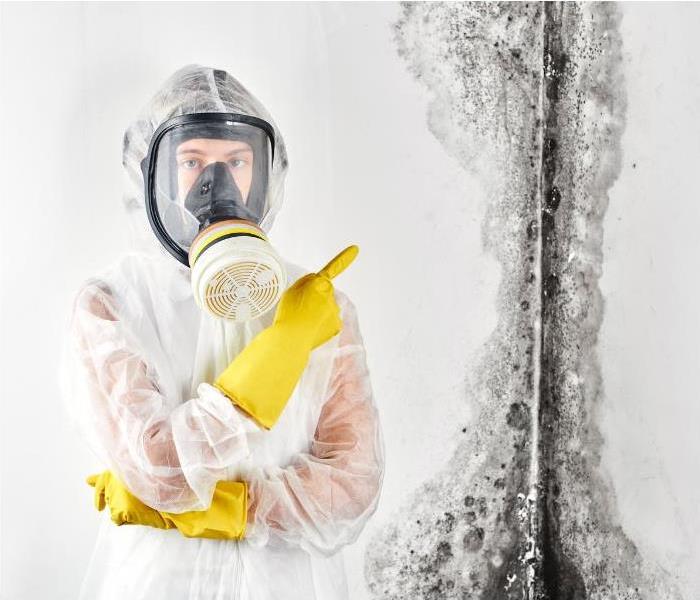 Black mold in Pueblo, CO
Black mold in Pueblo, CO
Living in Pueblo, CO, with its unique climate and landscape, brings both beauty and challenges. One such challenge that homeowners may face is the presence of black mold. Mold can be harmful to both your home and your health, making it essential to address the issue promptly and effectively. In this comprehensive guide, we will explore the causes of black mold in Pueblo, CO, and provide practical steps to get rid of it, ensuring a healthier living environment for you and your family.
Understanding Black Mold:
Black mold, scientifically known as Stachybotrys chartarum, is a type of mold that thrives in damp and humid conditions. Pueblo, with its semi-arid climate, can experience periods of high humidity, especially during the summer months. Combine that with any water damage or leaks in your home, and you have the perfect conditions for black mold growth.
Causes of Black Mold in Pueblo, CO:
Water Leaks and Moisture:
Pueblo's dry climate doesn't eliminate the possibility of water-related issues. Leaky roofs, plumbing problems, or flooding can create the ideal environment for mold growth.
Inspect your home for any water leaks, especially in areas prone to moisture, such as basements, bathrooms, and kitchens.
Poor Ventilation:
Inadequate ventilation can trap moisture indoors, promoting mold growth. Ensure that your home is well-ventilated, especially in areas like attics and crawl spaces.
Use exhaust fans in bathrooms and kitchens to reduce humidity levels.
Condensation:
Condensation can occur on windows and cold surfaces, providing a breeding ground for mold. Regularly wipe down and dry these surfaces, especially during the colder months.
Consider using dehumidifiers to maintain optimal indoor humidity levels.
Steps to Get Rid of Black Mold:
1. Identify and Isolate the Mold:
Begin by identifying the areas affected by black mold. Common locations include damp basements, bathrooms, and areas with water damage.
Isolate the contaminated areas to prevent the mold spores from spreading to other parts of your home.
2. Wear Protective Gear:
Before tackling mold removal, protect yourself by wearing appropriate gear, including a mask, gloves, and goggles. This prevents inhalation or skin contact with mold spores.
3. Clean and Remove Mold:
For small affected areas, a mixture of white vinegar and water or hydrogen peroxide can be effective in cleaning mold. Scrub the surfaces thoroughly and allow them to dry.
Larger infestations may require professional assistance. Consider hiring a mold remediation expert in Pueblo to ensure safe and thorough removal.
4. Repair Water Leaks:
Address the root cause of mold by fixing any water leaks promptly. Whether it's a leaking roof, plumbing issue, or compromised foundation, repairing these problems is crucial to preventing mold recurrence.
5. Improve Ventilation:
Enhance ventilation in your home by opening windows, using exhaust fans, and installing ventilation systems in areas prone to moisture.
Consider using air purifiers equipped with HEPA filters to trap mold spores and improve indoor air quality.
6. Use Mold-Resistant Products:
When renovating or remodeling, choose mold-resistant materials for walls, floors, and ceilings. These products are designed to deter mold growth, providing long-term protection.
7. Regular Maintenance:
Establish a routine for inspecting your home for potential mold growth. Regular maintenance, such as cleaning gutters, fixing leaks, and maintaining proper ventilation, can prevent mold issues from recurring.
Addressing black mold in Pueblo, CO, requires a proactive and comprehensive approach. By understanding the causes of mold growth and implementing effective removal and prevention strategies, you can create a healthier living environment for yourself and your family. Remember, when dealing with extensive mold infestations, it's essential to seek professional assistance to ensure thorough remediation and a long-term solution. Taking these steps will not only protect your home but also contribute to the overall well-being of your household in the unique climate of Pueblo, Colorado.
Dealing with Water Damage from a Leaking Toilet and the Role of SERVPRO of Pueblo in Restoration
1/15/2024 (Permalink)
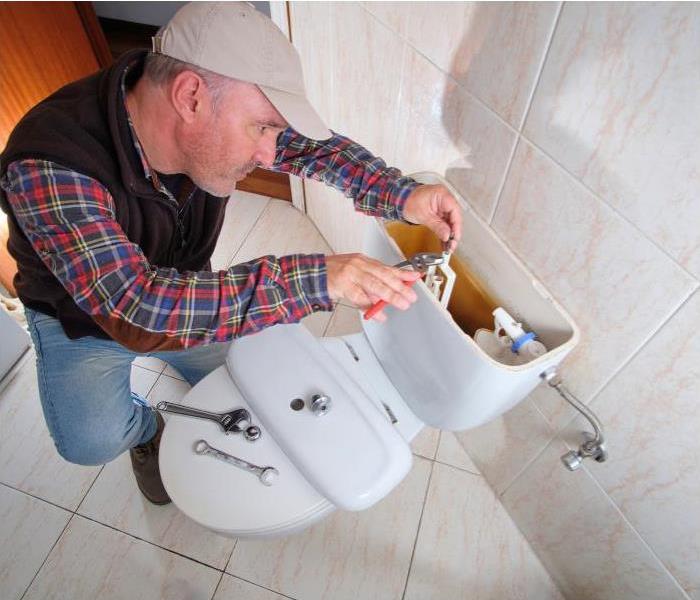 Leaking Toilet in Pueblo, Colorado.
Leaking Toilet in Pueblo, Colorado.
Water damage is a homeowner's nightmare, and a leaking toilet can quickly escalate into a major problem if not addressed promptly. Whether it's a slow, persistent leak or a sudden burst, water damage can wreak havoc on your home, causing structural issues, mold growth, and damage to personal belongings. In this blog, we will explore practical tips for dealing with water damage from a leaking toilet and highlight the invaluable assistance offered by SERVPRO of Pueblo in mitigating and restoring your home.
Identifying the Leak
The first step in addressing water damage from a leaking toilet is identifying the source of the leak. Leaks can occur in various places, such as the tank, bowl, supply line, or wax ring. Check for visible signs of water around the base of the toilet, on the floor, or dripping from the tank or bowl. A running toilet or unusual sounds during flushing can also indicate a problem. Once you've identified the source, turn off the water supply to the toilet to prevent further damage.
Quick Action is Key
Time is of the essence when dealing with water damage. The longer water sits, the greater the potential for structural damage and mold growth. Begin by removing excess water using towels, mops, or a wet/dry vacuum. Wipe down surfaces to prevent water absorption and promote drying. If the water damage is extensive, consider using a dehumidifier to reduce humidity levels in the affected area.
Remove Damaged Items
Personal belongings and furniture in the affected area should be promptly removed to prevent further damage. Upholstered furniture, carpets, and rugs are particularly susceptible to water absorption and can harbor mold if not addressed promptly. If possible, move items to a dry area or elevate them to allow air circulation. SERVPRO of Pueblo can assist in the assessment and removal of damaged items, utilizing their expertise in water damage restoration.
Thoroughly Dry the Area
After removing excess water and items, focus on thoroughly drying the affected area. Open windows and doors to promote ventilation and use fans to expedite the drying process. If the water damage is extensive, professional-grade drying equipment may be necessary to ensure that hidden pockets of moisture are addressed. SERVPRO of Pueblo employs advanced drying techniques and equipment to achieve optimal results, preventing long-term damage and mold growth.
Addressing Flooring and Walls
Flooring and walls are particularly vulnerable to water damage. In the case of hardwood floors, prompt removal of water and thorough drying are crucial to prevent warping and irreversible damage. Similarly, drywall can absorb water and become a breeding ground for mold if not addressed promptly. SERVPRO of Pueblo specializes in water damage restoration, including the repair and replacement of flooring and walls, ensuring a comprehensive restoration process.
Inspect and Repair Plumbing
Once the immediate water damage has been addressed, it's essential to inspect and repair the plumbing issue causing the leak. This may involve tightening loose connections, replacing faulty parts, or even repairing or replacing damaged pipes. If you are uncertain or uncomfortable with plumbing repairs, it is advisable to seek the expertise of a professional plumber. SERVPRO of Pueblo can also assist in coordinating plumbing repairs as part of their comprehensive restoration services.
Professional Assessment and Restoration with SERVPRO of Pueblo
While the initial steps in dealing with water damage are crucial, the expertise of a professional restoration service like SERVPRO of Pueblo is invaluable in ensuring a thorough and effective restoration process. SERVPRO's team of trained technicians possesses the knowledge, experience, and advanced equipment needed to assess the extent of the damage and implement a comprehensive restoration plan.
SERVPRO of Pueblo follows a systematic approach to water damage restoration:
Assessment: A thorough evaluation of the extent of water damage is conducted, including identifying hidden pockets of moisture using specialized equipment.
Extraction: Advanced extraction equipment is used to remove excess water from the affected area, preventing further damage.
Drying: High-powered air movers and dehumidifiers are deployed to dry the area completely, ensuring that all moisture is eliminated.
Cleaning and Sanitizing: The affected area is cleaned and sanitized to prevent mold growth and ensure a safe living environment.
Restoration: SERVPRO of Pueblo provides comprehensive restoration services, including repairs to flooring, walls, and other structural elements. The goal is to return your home to its pre-damage condition.
Dealing with water damage from a leaking toilet requires a prompt and systematic response to minimize the potential for long-term damage. While initial steps such as identifying and addressing the source of the leak are crucial, the expertise of professionals like SERVPRO of Pueblo is instrumental in ensuring a thorough and effective restoration process. By following the tips outlined in this blog and enlisting the assistance of SERVPRO of Pueblo, homeowners can navigate the challenges of water damage and restore their homes to a safe and secure condition.





 24/7 Emergency Service
24/7 Emergency Service









